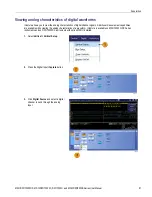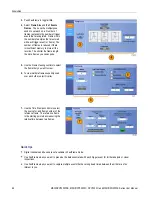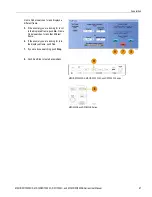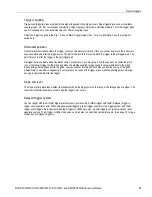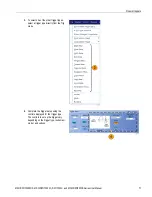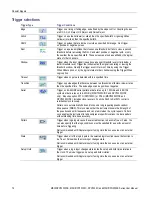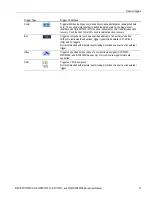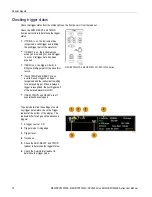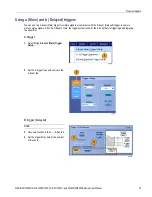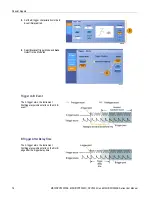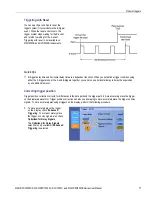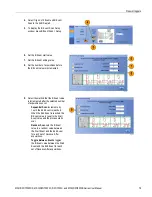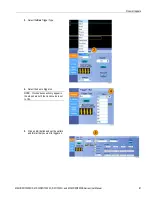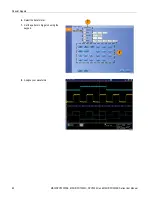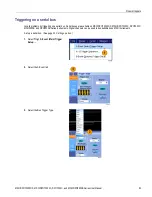
Pinpoint triggers
Pinpoint triggers
The Pinpoint trigger system comes with advanced trigger types that are usable on both A and B triggers, and it can reset the
trigger sequence if the B event does not occur after a speci
fi
c number of events or a speci
fi
c time. Pinpoint triggers support
capture of events based on the most complex trigger event or sequence of trigger events.
Only a portion of the Pinpoint trigger functionality is available on MSO5000B and DPO5000B instruments.
This section contains concepts and procedures for using the trigger system.
Triggering concepts
Trigger event
The trigger event establishes the time-zero point in the waveform record. All waveform record data are located in time with
respect to that point. The instrument continuously acquires and retains enough sample points to
fi
ll the pretrigger part of the
waveform record. When a trigger event occurs, the instrument starts acquiring samples to build the posttrigger part of the
waveform record (displayed after, or to the right of, the trigger event). Once a trigger is recognized, the instrument will not
accept another trigger until the acquisition is complete and the holdoff time has expired.
Trigger modes
The trigger mode determines how the instrument behaves in the absence of a trigger event:
Normal trigger mode enables the instrument to acquire a waveform only when it is triggered. If no trigger occurs, the last
waveform record acquired remains on the display. If no last waveform exists, no waveform is displayed.
Auto trigger mode enables the instrument to acquire a waveform even if a trigger does not occur. Auto mode uses a timer
that starts after a trigger event occurs. If another trigger event is not detected before the timer times out, the instrument
forces a trigger. The length of time it waits for a trigger event depends on the time base setting.
Auto mode, when forcing triggers in the absence of valid triggering events, does not synchronize the waveform on the
display. The waveform will appear to roll across the screen. If valid triggers occur, the display will become stable.
In edge-trigger mode, force the instrument to trigger by pushing the Force Trigger button on the Trigger Setup control window.
Select the trigger mode in the Trig > Mode menu. For more information, see the instrument online help.
Trigger holdoff
Trigger holdoff can help stabilize triggering, by extending the period in which further trigger recognition is suppressed after
initiating an acquisition. Such an extension can help the system skip over the remaining events of a recurring burst of events,
and thus always trigger on the
fi
rst event in each burst. Adjust holdoff to obtain stable triggering when the instrument is
triggering on undesired trigger events.
Set the trigger holdoff in the Trig > Holdoff menu. For more information, see the instrument online help.
68
MSO/DPO70000DX, MSO/DPO70000C, DPO7000C, and MSO/DPO5000B Series User Manual








